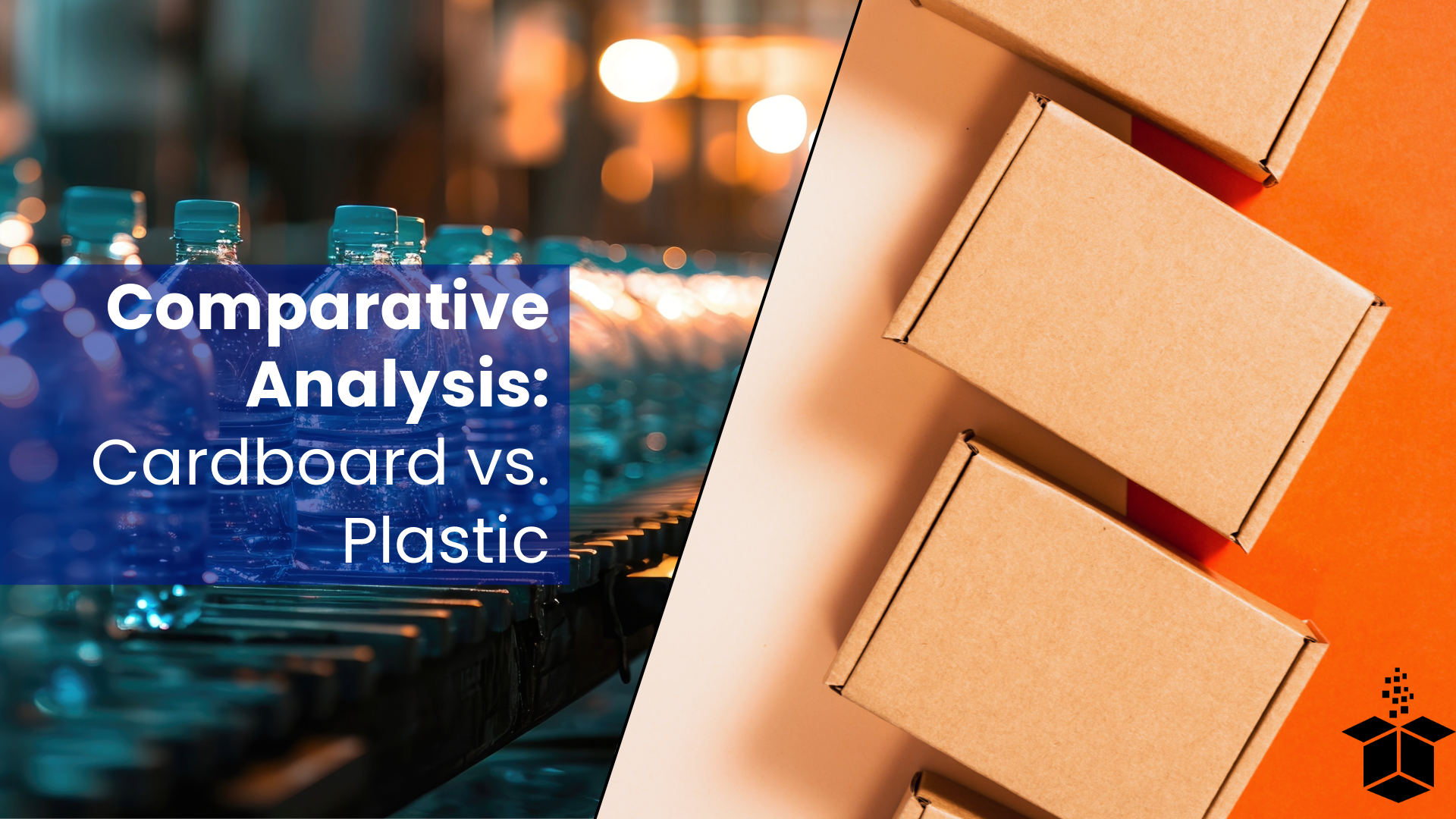Comparative Analysis: Cardboard vs. Plastic Packaging
The debate between cardboard and plastic has been ongoing for years among packaging professionals and retail experts, especially in the context of sustainability and environmental impact. Both materials are unique on their own with pros and cons for each, choosing between them is a complex decision for businesses and consumers. In this week's blog, we are going to dive into the environmental impacts, sustainability, and functionality of cardboard and plastic packaging to help shed light on this ongoing debate to hopefully help you make the best decision for your company.
Environmental Impact:
We are going to start with environmental impact. Environmental impact refers to the effects humans have on the environment. This includes pollution, habitat destruction, and resource depletion. Companies are more aware of their carbon footprint than ever before and are looking for ways to lessen their impact on the environment. Let’s look at the environmental impact of cardboard and plastic.
Cardboard:
Cardboard is often pushed as a more environmentally friendly option compared to plastic due to its biodegradability and recyclability.
It is derived from wood pulp, a renewable resource, and can be easily recycled into new cardboard or other paper products.
However, the production of cardboard requires significant amounts of water and energy, and it can contribute to deforestation if not sourced sustainably.
Plastic:
Plastic packaging poses a considerable environmental challenge due to its non-biodegradable nature and persistence in the environment.
While certain types of plastic are recyclable, many end up in landfills or oceans, where they can take hundreds of years to decompose, releasing harmful chemicals in the process.
The production of plastic also relies heavily on fossil fuels, contributing to greenhouse gas emissions and exacerbating climate change.
Sustainability:
Sustainability is different than environmental impact. According to Investopedia “sustainability seeks to prevent the depletion of natural or physical resources, so that they will remain available for the long term.” Sustainability and eco-friendliness of packaging have become a mainstream topic in recent years.
Cardboard:
From a sustainability standpoint, cardboard holds an advantage over plastic due to its biodegradability and recyclability.
When sourced from responsibly managed forests and recycled properly, cardboard can be a renewable and low-impact packaging option.
However, the recycling process for cardboard still requires energy and water, and not all cardboard products are easily recyclable, especially those coated with plastic or other materials.
Plastic:
Despite its negative environmental reputation, plastic packaging does have certain sustainability benefits, particularly in terms of resource efficiency.
Certain types of plastic, such as PET (Polyethylene terephthalate) and HDPE (High-density polyethylene), are highly recyclable and can be repurposed into new products, including packaging.
Additionally, advancements in technology have led to the development of biodegradable and compostable plastics, offering potential alternatives to traditional petroleum-based plastics.
Functionality:
While the environmental impact and sustainability are huge points that need to be considered, your business must think about functionality. If you are simply shipping pre-packaged products, cardboard shipping boxes might be the best option. However, if you are shipping products that need to be kept away from moisture or are incredibly delicate, then plastic could be a better option for protecting your products.
Cardboard:
Cardboard packaging is lightweight yet sturdy, making it ideal for protecting goods during transit.
It can be easily customized to fit various shapes and sizes, offering versatility in packaging design.
Cardboard is also relatively inexpensive compared to plastic, making it a cost-effective option for businesses.
Plastic:
Plastic packaging is known for its durability and moisture resistance, which is crucial for preserving the integrity of products, especially food and beverages.
It can be molded into virtually any shape, allowing for intricate designs and product visibility.
Plastic packaging is lightweight, which can reduce transportation costs and carbon emissions during shipping.
Conclusion
In the cardboard vs. plastic packaging debate, there is no one-size-fits-all solution. Both materials have their strengths and weaknesses, and the choice between them often depends on specific uses, environmental considerations, and consumer preferences. While cardboard holds an edge in terms of recyclability and biodegradability, plastic offers superior durability and moisture resistance.
Ultimately, the key to sustainable packaging lies in reducing overall consumption, increasing the ability to recycle and compost packaging, and promoting responsible sourcing practices. By carefully weighing the environmental impacts and functionality of cardboard and plastic packaging, businesses and consumers can make more informed decisions to minimize their ecological footprint.





